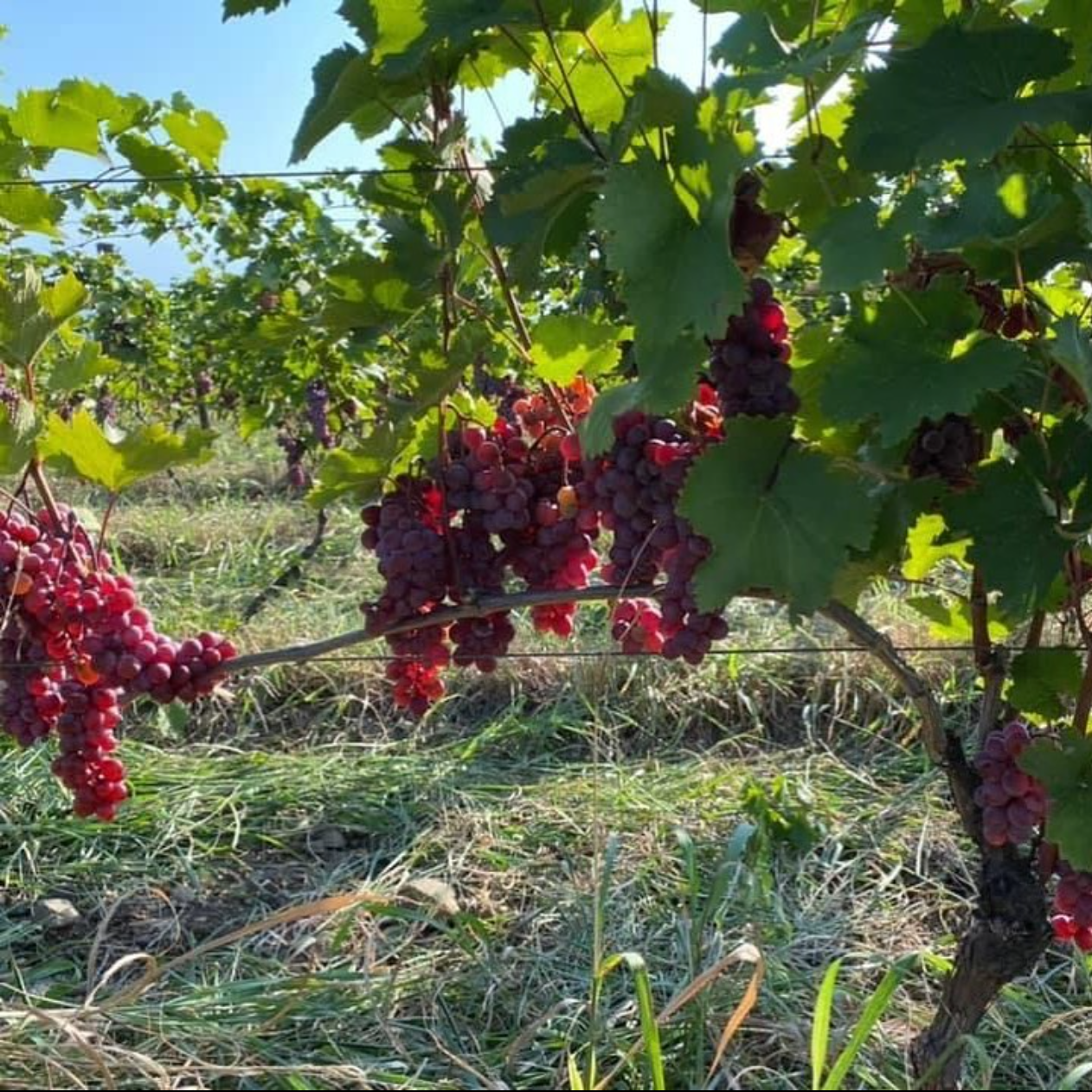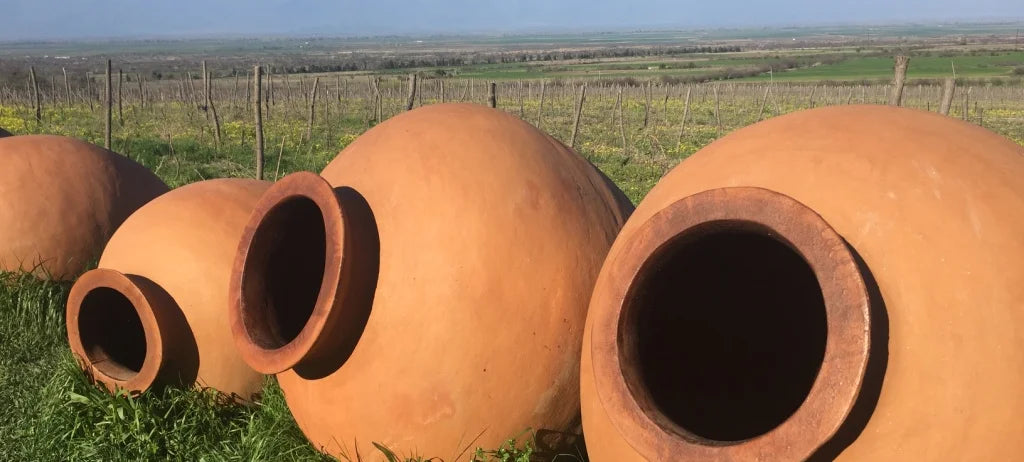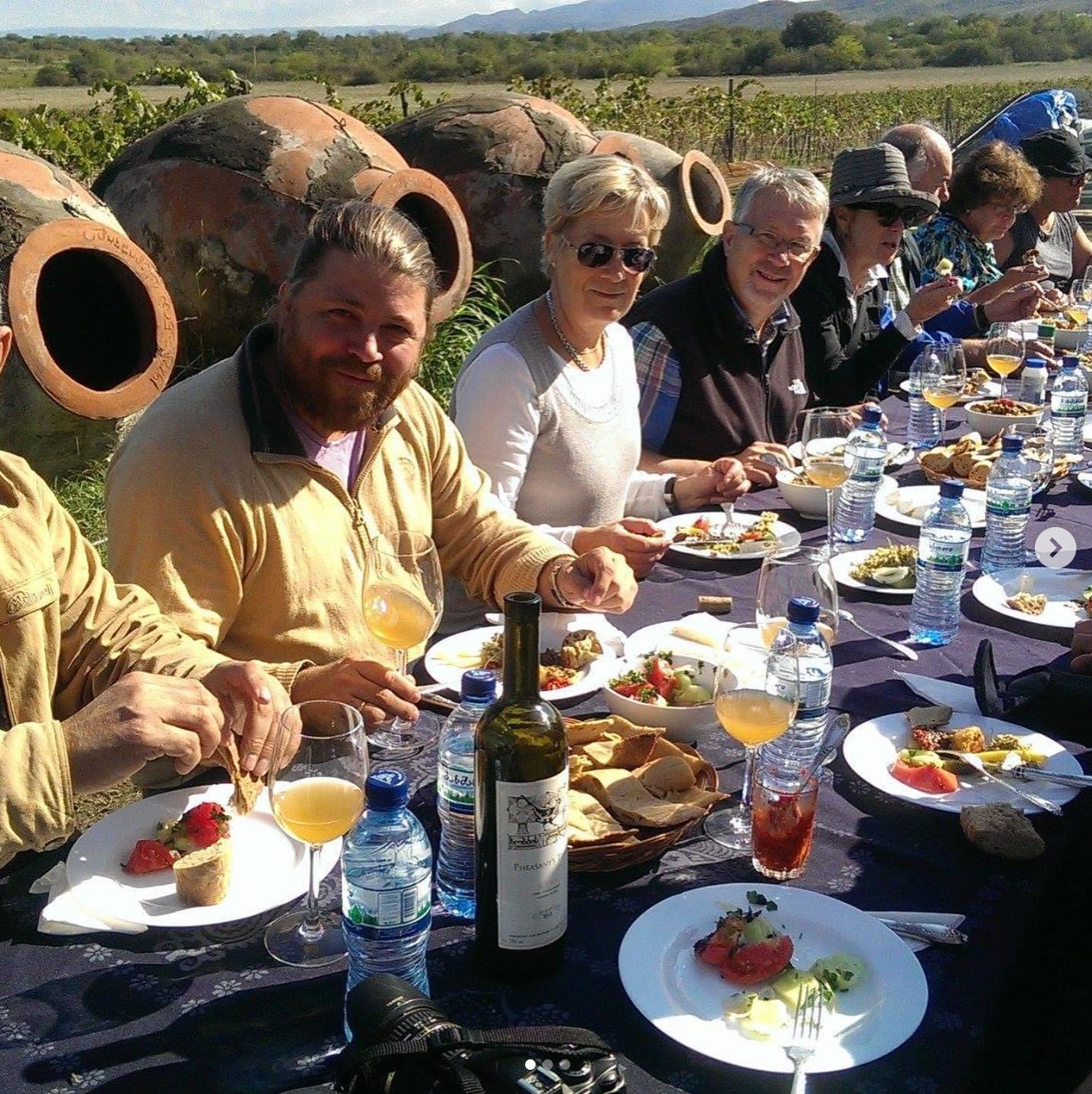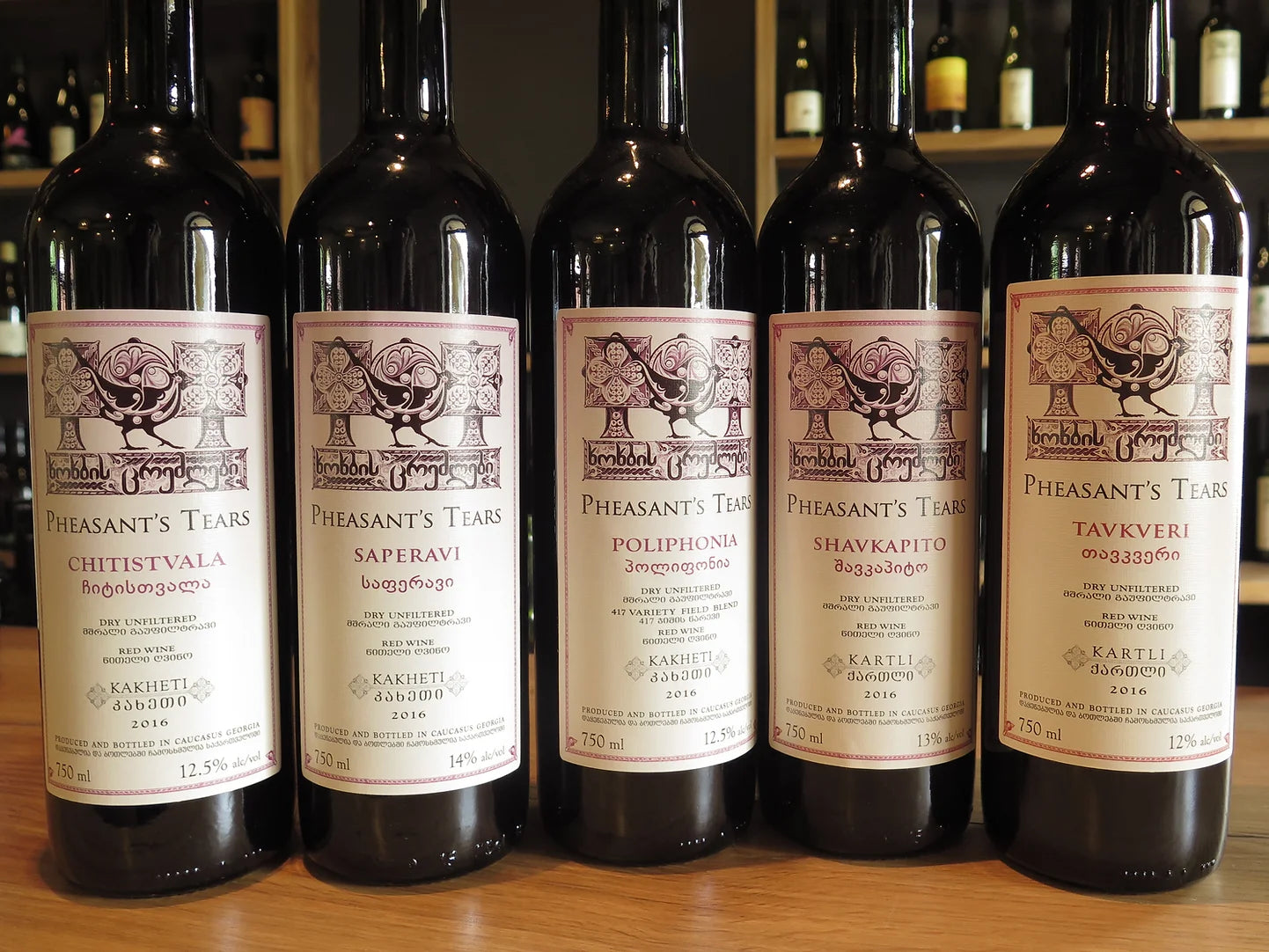PHEASANT'S TEARS
JOHN WURDEMAN & GELA PATALISHVILI
Kakheti, Georgia
The name Pheasant’s tears comes from a Georgian tale in which the hero claims that only a wine beyond measure could make a pheasant cry tears of joy. With each bottle that leaves their hands, John and Gela strive to meet that ancient standard.
Gela Patalishvili is a winegrower and farmer in the Kakheti region of eastern Georgia while his business partner, John Wurdeman, is an American painter based in Georgia since 1998.
Their friendship and shared passion for wine brought them together to found Pheasant’s Tears in 2007, when they bought their first Saperavi vineyard.
.
QUICK FACTS
ESTABLISHMENT
2007
GRAPES
Rkatsiteli, Kisi, Saperavi, Danakharuli, Mtsvane, Chinuri
WINEMAKING STYLE
In line with traditional Georgian winemaking methods, the ripest of stems are added to the grape skins, juice and pits, for both red and our white wines. Maceration time depends on varietal and the size of the qvevri and can vary between 3 weeks and 6 months.
With all wines being aged exclusively in qvevri, no flavors are imparted from oak barrels.
FUN FACTS
Qvevri at Pheasant's Tears range in age, with some dating back to the 19th century.
The cellar remains on the vineyard itself to minimize damage to the grapes during transportation. It also helps to harvest and press before the hottest hours of the day.
Pheasant Tear's is reintroducing traditional varietals that have not been experienced for nearly a hundred years.
"Natural winemaking is simply a return to healthier farming and cellar practices before industrialization took place. If we are concerned about the provenance of the food we eat—how it’s treated, grown and harvested—then why not apply this ethos to our beverages?" - John Wurdeman
PHEASANT'S TEARS LOCATION
-
Pheasant's Tears Kisi 2023
Regular price HK$230.00Regular priceUnit price / per
BACKGROUND OF NATURAL WINE IN GEORGIA
Georgia, a cradle of winemaking, has become a huge wine destination for natural wine drinkers. Located at the crossroads of Europe, Asia, and the Middle East, it boasts a rich tradition of crafting natural wines using the ancient Qvevri method, where wines ferment in large clay vessels buried underground. Key grape varieties such as Saperavi and Rkatsiteli thrive in prominent wine regions like Kakheti, contributing to the country's reputation as a hub for distinctive and terroir-driven natural wines. Embrace the heritage and flavors of Georgian natural wines, a testament to the country's enduring commitment to its vinicultural roots.
Organic, Biodynamic and Natural wine. What’s the difference?
To understand this concept and its various ramifications, it is necessary to keep something clear in mind: before the 20th century and the spreading of affordable synthetic fertilisers, all farming was organic. When the shift to the use of synthetics and pesticides happened, it became necessary to diversify traditional organic farming from the new modern farming.
ORGANIC WINE
Simply put, organic farming forbids the use of synthetic fertilisers, synthetic pesticides, herbicides, or genetically modified organisms. The basic requirements are generally specific and engage the farmers not to use any chemical fertilisers and other synthetic products in the vineyard. It does not prevent the vintner from using the conventional winemaking process after harvesting.
BIODYNAMIC WINE
Let’s take organic farming one step further: Biodynamic. The creator of this agricultural system is the Austrian philosopher Rudolf Steiner, who developed the principles of biodynamics in a series of lectures given in 1924 in Germany. Here lies the foundation of true organic wines, with a strict limit in the use of additives, stringent requirements and at the end obtaining a biodynamic certification.
NATURAL WINE
The previous definitions are usually, and rightfully, associated with it, because most natural wine is also organic and/or biodynamic. But not vice versa!
Natural wine is wine in its purest form, simply described as nothing added, nothing taken away, just grapes fermented. No manipulation whatsoever, minimal intervention both in the vineyards and in the winery. Healthy grapes, natural yeast and natural fermentation, with no filtration nor fining. Sounds easy, right? However, making natural wine is unforgiving and it requires a bigger amount of work than conventional wine. To this day, natural wine has no certification yet.








